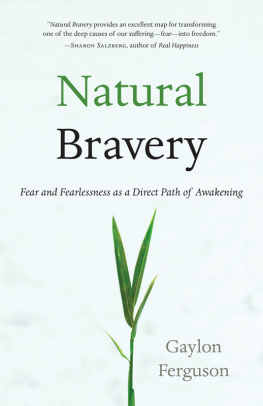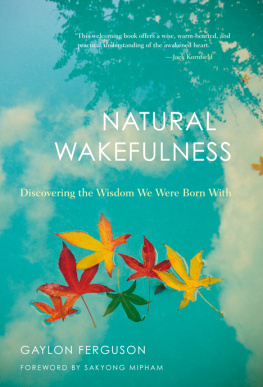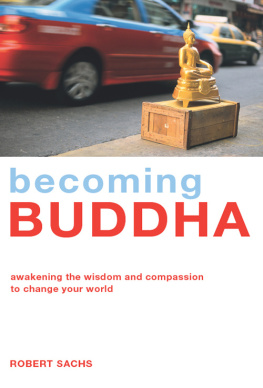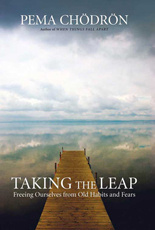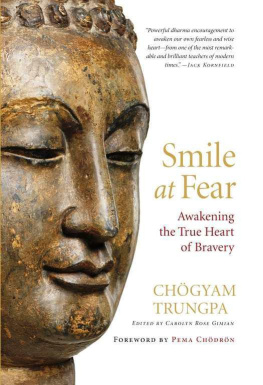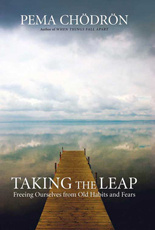ABOUT THE BOOK
Fear is something thats such a part of our lives that it doesnt seem it would be possible to live without it. This book disputes that claim in a powerful way. Gaylon Ferguson presents traditional Buddhist teachings to show that the fear that so often wreaks havoc on us is in fact quite insubstantialand its mostly something we create ourselves. If we can learn to see that, it becomes pretty simple to un-create it, and we also discover that theres a natural fearlessness in us that goes far deeper than fear. With this natural bravery as our foundation, we can live our own lives more effectively and also be a better help and comfort to others.
GAYLON FERGUSON is a faculty member in both Religious Studies and Interdisciplinary Studies at Naropa University, in Boulder, Colorado. He is an acharya, or senior teacher, in the Shambhala International Buddhist community. After studying meditation and Buddhist philosophy with Tibetan master Chgyam Trungpa in the 1970s and 1980s, Ferguson became a Fulbright Fellow to Nigeria and completed a doctoral degree in cultural anthropology at Stanford University. After several years of teaching cultural anthropology at the University of Washington, he became teacher-in-residence at Karme Choling Buddhist Retreat Center, through 2005, when he joined the faculty of Naropa University.
Sign up to receive news and special offers from Shambhala Publications.

Or visit us online to sign up at shambhala.com/eshambhala.
Natural Bravery
Fear and Fearlessness as a Direct Path of Awakening
GAYLON FERGUSON

Shambhala Boulder 2016
For my mother and grandmothersthe ones who first showed me the way of bravery
SHAMBHALA PUBLICATIONS, INC.
4720 Walnut Street
Boulder, Colorado 80301
www.shambhala.com
2016 by Gaylon Ferguson
Cover art: ZenShui/Laurence Mouton/Getty Images
Cover design: Graciela Galup
All rights reserved. No part of this book may be reproduced in any form or by any means, electronic or mechanical, including photocopying, recording, or by any information storage and retrieval system, without permission in writing from the publisher.
LIBRARY OF CONGRESS CATALOGING-IN-PUBLICATION DATA
Ferguson, Gaylon Jules.
Natural bravery: fear and fearlessness as a direct path of awakening / Gaylon Ferguson.First edition.
pages cm
eISBN: 978-0-8348-0295-7
ISBN 978-1-59030-973-5 (paperback)
1. MeditationBuddhism. 2. Spiritual lifeBuddhism. 3. FearReligious aspectsBuddhism. 4. AwarenessReligious aspectsBuddhism. I. Title.
BQ5612.F473 2015
294.35696dc23
2015009700
I remember noticing an atmosphere of fear. First I felt it at home, with family, then at work and in my community. Certainly, after the violent events of 9/11, many of us learned to live with a heightened awareness of terror. Suddenly fear seemed the leading edge, the most pervasive emotion in our age. Psychologists suggest that avoiding fear is a primary motivation for much of what we do, keeping ourselves busy to avoid feeling this underlying tension.
The word fear spans diverse experiences: being somewhat frightened, worried, anxious, having a phobia, breaking out in a cold sweat, completely panicked. Will the children be safe here? Are these storms the result of global warming? Does this food cause illness? What if the global financial system fails? Are they lying to us, again? Can we still trust each others basic decency? As the University of Houston research professor Bren Brown says of our post9/11 life: The past twelve years have been marked by a deep fear in our culture. Contemplating my own experience and sensing the feelings of those around me, gradually I realized fear and fearlessness as central spiritual, psychological, and political challenges in our time.
Natural Bravery offers the wisdom of ancient traditions of courage and compassion that now feel more valuable than ever. Bravery is necessary. Based on my training with the Tibetan Buddhist meditation masters and social visionaries Chgyam Trungpa and Sakyong Mipham Rinpoche, Ive outlined here a step-by-step approach to engaging fear as a direct path to transforming ourselves and our world. The aim of this path is wise and joyful living, in deep harmony with others and the natural world. We are invited to walk this path of courage together with our spiritual ancestors, the brave women and men throughout history who have manifested fearlessness in everyday life.
In this book, we often look back at inspiring examples of spiritual warriorship. Reflecting on these ancestral figures has nourished and strengthened me, and I hope to encourage you as well by sharing what Ive been taught, studied, and practiced.
We are invited, daily, to consume blaring news stories of greed and deception, violence and cowardice. In a gentle countergesture, we can invigorate our innate courage by thinking over the life stories of some of the generous human beings who sacrificed for their communities: Joan of Arc and Rosa Parks, Gandhi and Mandela, Aung San Suu Kyi. Alongside these famous national heroes are thousands of unsung everyday warriors who have come to the aid of communities facing hurricanes, tornadoes, tsunamis, devastating fires, and earthquakes. All of these brave ones are an essential part of our human heritage.
Many of us continue to manifest the tradition of bravery in the face of present-day challenges. Lately Ive been contemplating some contemporary stories of courage in action in the neighborhoods of Chicago, Illinois. In April 2013, I traveled to Chicago for a Youth Congress on Peace at Malcolm X City College. This one-day program was part of a weekend called Imagining Peace. The entire weekend was an engaged contemplation of practical alternatives to violence. Imagining Peace began Friday evening in the University of Chicagos Rockefeller Chapel with a talk on creating enlightened society by Sakyong Mipham. The Sakyong is the spiritual leader of Shambhala International, a global community of meditation practitioners who aspire to link inner development with social transformation and planetary sustainability. Shambhala, in association with dozens of partners from local Chicago organizations, convened this Youth Congress on Peace. This was a timely gathering.
In previous years, the homicide rate in most major urban areas of the United States continued to declinewith the exception of Chicago, where lethal youth violence escalated. Bloggers cite gruesome statistics for Chicago as the deadliest global city. As we know, violence is now a national social problem. In July 2012, a former University of Colorado graduate student opened fire in a crowded movie theater in Aurora, Colorado, killing a dozen people. In all, seventy people were wounded that night in what was one of the largest mass shootings in U.S. history. In December 2012, a young man fatally shot twenty children and six adult staff members at Sandy Hook Elementary School in Newtown, Connecticut. Before driving to the school, he shot and killed his mother at their Newtown home. After the mass murder at the school, he shot and killed himself. During the annual Boston Marathon on April 15, 2013, two pressure-cooker bombs exploded, killing three people and injuring 264. In June 2015, in Charleston, South Carolina, a white supremacist gunman shot to death nine church members at one of the nations oldest African-American churches. These and similar tragic events cry out for searching inquiry: What are the sources of violence in our communities? What can be done to interrupt the cycles of killing? What is the practical relevance of what Sakyong Mipham called original peace? I went to Chicago to gather with hundreds of others seeking insight into the power of nonviolence and a peaceful path to bravery.
Next page
